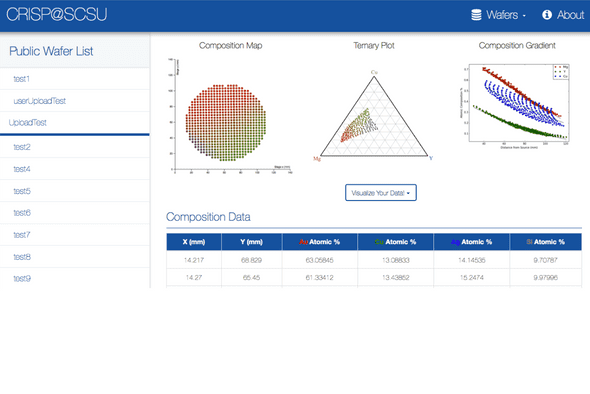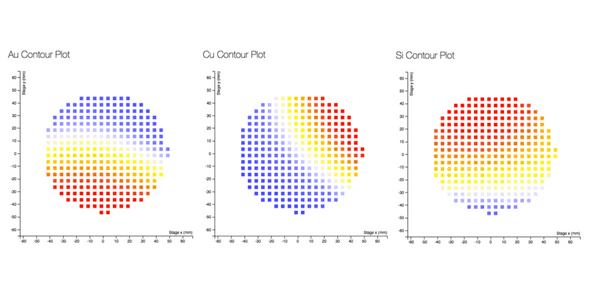During an REU (Research Experiences for Undergraduates) in 2014 I was part of an effort between my Undergrad university (Southern Connecticut State University) and a group at Yale to characterize large compositional libraries of metallic glasses. Theses libraries where created using magnetron sputtering using a thin film silicon wafer as the target. Depending on if a mask was used, each wafter could contain ~300 unique compositions or a continuous composition gradient if the mask was absent.
At my university we where tasked with determining the composition at each point on a wafer. Composition for each point on the wafer was determined using energy dispersive X-ray spectroscopy (EDS). In it's initial state characterization data was shared between groups in a dropbox folder. I realized that this method of data storage was inefficient for a number of reasons. First, multiple types of characterization was done for each data point. Not only was the composition determined, but a number of other properties where also considered, such surface imagining. Furthermore, this data was meant to be post-processed to create a number of visualizations such as the composition gradient across the wafer and a ternary diagram. Due to the data being stored in multiple formats and files, this process was laborious.
Observing such shortcomings, I decided to create a web application that will allow both groups to upload characterization information for each wafer. This app visualized each wafers composition as a RGB plot and composition gradient as well as a ternary plot. Such plots where interactive allowing users the option to view any images associated with a particular point.
Visualization Types
RGB Plots
3D Composition Maps
Contour Plots
Ternary Plots
The app was built using Django. It contained models for the wafers and their data points. Wafers where associated with users, where the uploader had the option to set a wafer to private and public. Users of the app could view all the public wafers and manage the data of their wafers. This included the option to add and edit points and upload entire data sets in bulk. On the front end visualizations where all handled done using D3.js.
This project was my first introduction to web development and my first real coding project. If it wasn't for this project I would of never realized the passion and talent I have for web dev and software development as a whole. Therefore I am happy to know that this this project is still being maintained and used by the Yale group. While it appears the newer app has since been rewritten in Meteor, it is comforting to see it still retains and iterates on my original vision.




